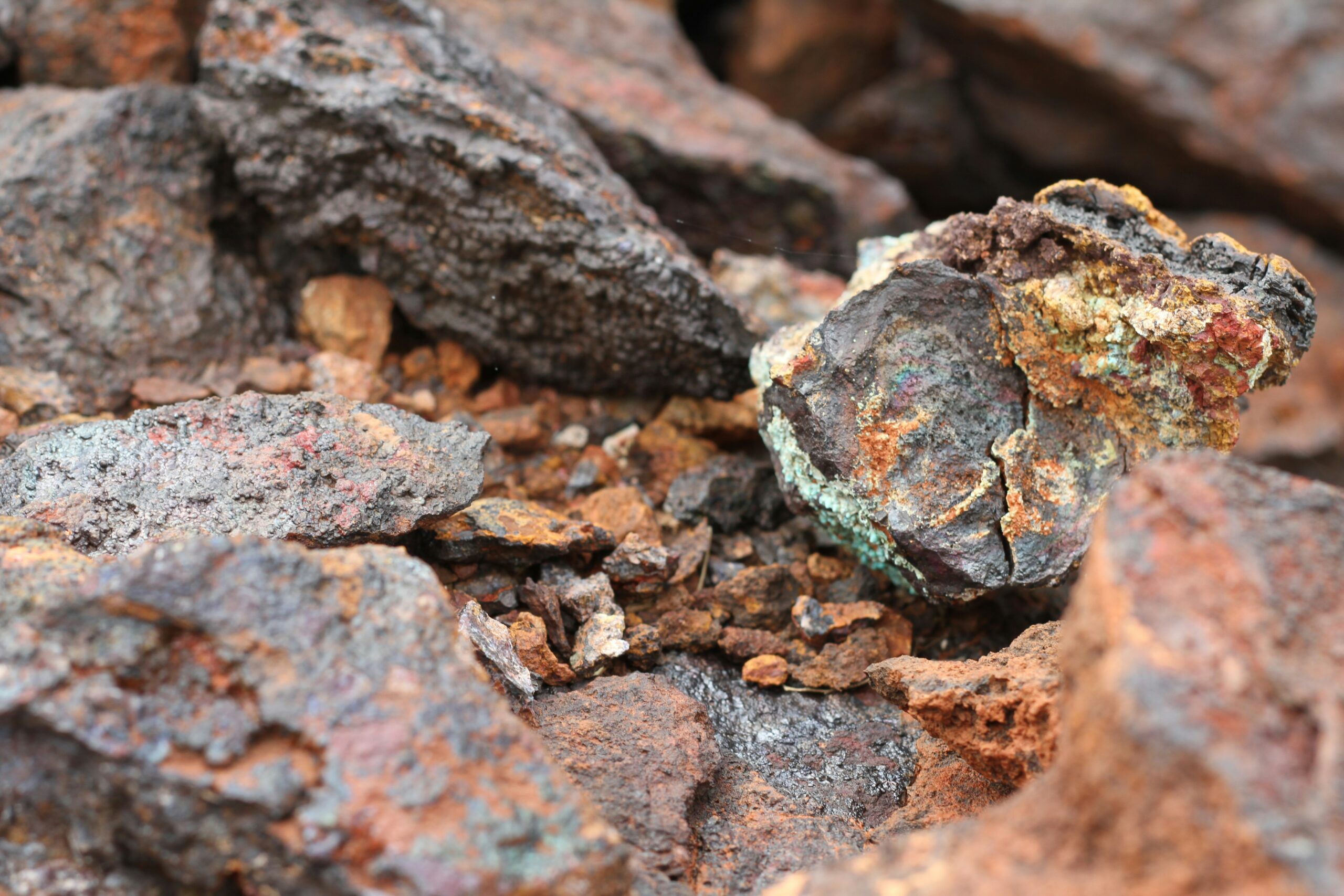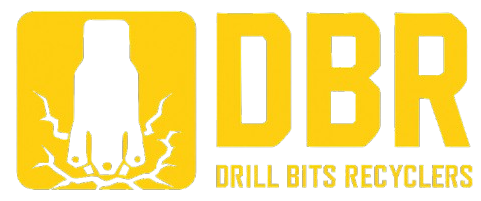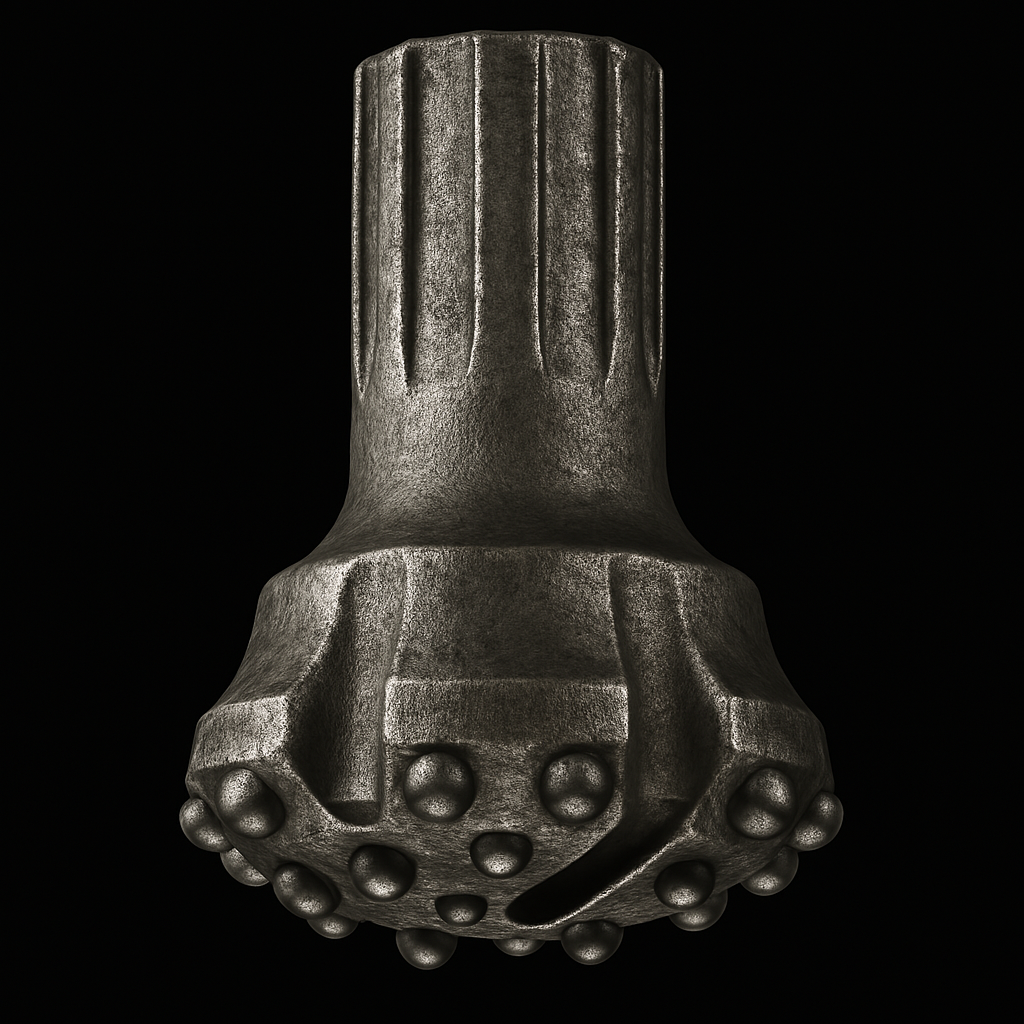Nickel's Hidden Empire in Western Australian Mining Operations
The surprising reach of nickel applications beyond obvious uses
Introduction: The Overlooked Role of Nickel in Mining
In the world of mining, some materials dominate the spotlight, iron, gold, lithium. But behind the scenes, one metal keeps operations running quietly, reliably, and profitably, nickel.
From processing plants in the Goldfields to dewatering systems in the Pilbara, nickel is everywhere. It’s used in pipes, pumps, tanks, valves, and structural components, not just for strength, but for its heat resistance, corrosion control, and durability under pressure. Yet many operators don’t realise how much of it surrounds them, or how much nickel scrap value is being overlooked when equipment is decommissioned or replaced.
In this blog, we’ll uncover:
- How nickel and nickel alloys are used across WA mining operations
- Why nickel scrap recycling is one of the most profitable and underutilised streams in heavy industry
- How to identify nickel on-site and recover value from equipment you already own
- The environmental and financial benefits of partnering with specialist recyclers
If you’ve ever wondered where nickel hides in your facility, or how to recycle nickel scrap in WA, you’re in the right place.
The Widespread Applications of Nickel in Mining
Nickel isn’t just a battery metal or export commodity. In mining operations across Western Australia, it plays a critical behind-the-scenes role in infrastructure, process systems, and high-performance equipment. Its resistance to corrosion, heat, and chemical damage makes it essential in environments where failure isn’t an option.
Nickel in Processing Equipment (Pipes, Pumps, Tanks)
From ore slurry pipelines to high-temperature acid leach systems, nickel is widely used in:
- Pipework that handles corrosive or high-pressure materials
- Valves, flanges, and fittings that maintain chemical integrity
- Tanks and vessels in hydrometallurgy and flotation circuits
- Pump casings and impellers exposed to abrasive slurries
Many of these components are made from nickel alloys, or nickel-stainless blends, especially in gold and nickel processing plants operating in harsh WA conditions.
Structural Components and High-Wear Areas
Nickel-enhanced steels are also common in structural areas that demand durability and heat resistance, including:
- Crusher linings and chutes
- Kiln and smelter enclosures
- Supporting brackets and frameworks around heat zones
These materials often contain high nickel content that is still recyclable and valuable after use.
Nickel Alloys Used in Heat-Resistant and Corrosive Environments
Nickel alloys like Inconel, Monel, and Hastelloy are standard in WA mining for their ability to withstand:
- Extreme heat in processing circuits
- Acidic or caustic environments
- Mechanical fatigue in moving systems
These high-performance alloys may only be used in select applications, but they often carry premium scrap value, especially when separated and tested correctly.
Why Nickel Scrap Is Highly Valuable
Nickel may work quietly in the background of mining operations, but when it comes to scrap value, it commands attention. Whether it’s embedded in a pump casing, an old tank, or a retired heat exchanger, nickel-rich components can deliver strong returns, especially when identified and recycled correctly.
Current Nickel Scrap Recycling Trends and Pricing
Nickel scrap is in growing demand due to:
- Global stainless steel production (nickel is a key alloying element)
- Electric vehicle battery manufacturing
- Rising prices for critical minerals in Australia and overseas
Specialty alloys like Inconel or Monel can command even higher prices when tested and sorted properly. For WA mining operations, this presents a clear opportunity to recover value from existing equipment.
The Global Demand for Nickel and Stainless Steel Production
Over 65% of nickel demand globally comes from stainless steel manufacturing. The rest goes into alloys, batteries, and specialist industrial uses, all of which continue to grow.
This strong industrial demand keeps scrap prices relatively stable, even when base metal markets dip. It also means that nickel recovery plays a critical role in reducing reliance on primary mining and supporting global supply chains.
Why Even Small Batches of Nickel Scrap Add Up in Value
Unlike bulkier ferrous scrap, nickel scrap often exists in smaller, high-value parts, valve bodies, heat plates, tool components, and fittings. But these smaller pieces can quickly add up:
- A few hundred kilograms of mixed nickel components can generate thousands in scrap returns
- Proper sorting and testing ensures maximum price per kilo
- Even offcuts from maintenance projects or shutdowns have value
If you’ve been discarding nickel-heavy scrap or mixing it into general bins, there’s likely untapped profit on your site right now.
Identifying Nickel in Mining Facilities
Nickel hides in plain sight. It’s often found in equipment that looks like standard stainless steel or alloy but contains significantly more value when tested. Knowing how to spot and separate nickel-rich components is key to unlocking hidden scrap revenue across your site.
Signs of Nickel-Containing Alloys in Equipment
While you can’t always tell by eye, there are common indicators that a component may contain high nickel content:
- Location, components in corrosive, high-temperature, or high-pressure areas are more likely to be made from nickel alloys
- Weight and density, nickel alloys tend to be heavier than standard stainless
- Lack of surface rust, consistent resistance to corrosion, even after long exposure, is often a nickel alloy trait
- Legacy equipment, older systems, especially in gold or base metal processing, often used nickel alloys where durability was critical
How to Test and Verify Nickel Content (XRF Analysis)
The most accurate way to identify nickel is with X-ray fluorescence (XRF) analysis. This handheld, non-destructive test can:
- Identify nickel content percentages in seconds
- Distinguish between 304, 316, Inconel, Monel, and other alloys
- Eliminate guesswork and misidentification
- Help recyclers grade and price your scrap correctly
At DBR, XRF testing is standard for all nickel recycling projects, so your team doesn’t need to guess or sort blindly.
Common Mistakes That Cause Nickel Scrap to Be Overlooked
Unfortunately, many valuable nickel components are lost due to:
- Mixing with general steel bins
- Assuming all stainless steel is the same
- Failing to test during equipment removal
- Lack of training or awareness among site crews
By introducing basic identification steps and calling in expert support, you can stop letting nickel scrap go to waste, and start recovering the full value it offers.
Nickel Recycling in WA Mining Operations
Across Western Australia’s mining sector, nickel is both a key resource and a quietly accumulating form of scrap. As equipment is decommissioned, upgraded, or maintained, large volumes of nickel-containing components are removed, often without a plan for recovery. But with the right systems in place, that scrap becomes a valuable revenue stream.
How WA Mining Companies Handle Nickel Recycling Logistics
For most operations, nickel recycling starts with identifying scrap during:
- Shutdowns and turnarounds
- Decommissioning of old plant infrastructure
- Regular maintenance of pumps, tanks, and pipework
Once identified, scrap should be:
- Sorted by material type (especially separating stainless from high-nickel alloys)
- Tested on-site or at a depot using XRF analysis
- Stored securely in labelled bins or containers to avoid contamination
DBR supports mining clients by coordinating these steps, offering on-site pickups, testing, and custom scrap tracking reports.
Partnering with Nickel Scrap Recycling Specialists
Not all metal recyclers can handle nickel properly. WA miners benefit most from working with scrap partners who:
- Understand mining equipment composition
- Provide XRF testing for accurate grading
- Offer transparent, competitive pricing
- Support remote logistics and reporting needs
DBR works directly with site teams to make nickel recovery simple, reliable, and profitable, even in remote or FIFO operations.
Case Examples of Nickel Recovery from Decommissioned Equipment
In one recent shutdown, a WA-based processing plant recovered over 1.2 tonnes of high-nickel scrap from decommissioned piping and tank linings. What would have gone to general scrap instead generated:
- Over $18,000 in recovered value
- A 27% reduction in disposal costs
- ESG credit through documented material diversion from landfill
This is just one example of how strategic scrap recovery turns maintenance waste into operational returns.

Environmental and Financial Benefits of Nickel Recycling
Recycling nickel isn’t just a smart financial decision, it’s a clear step toward a more sustainable mining operation. In WA’s resource sector, where ESG goals and bottom-line performance go hand in hand, nickel scrap recovery offers meaningful impact on both fronts.
Supporting a Circular Economy in Western Australia
Nickel is a finite resource, and demand is only increasing. Recycling helps reduce the need for virgin extraction by:
- Returning valuable nickel back into industrial use
- Reducing pressure on mining for new material
- Keeping high-grade alloys within WA’s resource loop
This kind of closed-loop thinking supports broader circular economy goals for the mining and manufacturing sectors.
Reducing Landfill Waste and Lowering Operational Costs
By recycling instead of discarding:
- Fewer metal components end up in landfill
- Waste disposal costs are reduced
- You avoid contamination issues with mixed scrap
For large mining projects, these savings can add up quickly. Nickel scrap is dense, heavy, and valuable, meaning every kilo recycled is one less cost to manage, and one more return on investment.
How Recycling Nickel Supports ESG Compliance and Reporting
Many WA mining companies now track:
- Scrap volumes by metal type
- Recycling rates across operational departments
- Sustainability performance in annual reports
Working with a certified nickel recycling partner like DBR means you get:
- Weight-based documentation
- Breakdowns by material
- Audit-ready records that support ESG reporting, ISO compliance, and stakeholder engagement
Recycling nickel isn’t just good for the planet, it’s good business.
Conclusion: Unlocking the Value of Nickel’s Hidden Empire
Nickel might not always get the spotlight in mining operations, but it plays a critical role behind the scenes — and in your scrap bins. From corrosion-resistant processing equipment to high-performance alloys in structural systems, nickel is everywhere, quietly adding value and strength to your operations.
The good news is, that value doesn’t end when equipment wears out. With proper identification, testing, and recycling, nickel scrap becomes a high-return resource, not a forgotten waste stream.
At Drill Bits Recyclers, we help WA mining operators unlock that hidden value by offering:
- On-site XRF testing to identify nickel content
- Regional pickup and scrap sorting support
- Transparent pricing and ESG-compliant reporting
If you’re ready to stop overlooking nickel and start recovering what it’s truly worth, we’re here to help.
Contact our WA nickel recycling team today
Let’s assess the hidden value in your equipment and recover more from every operation.
(08) 6385 7855
info@dbrecyclers.com

